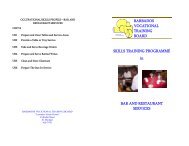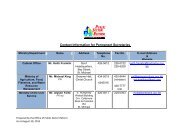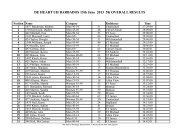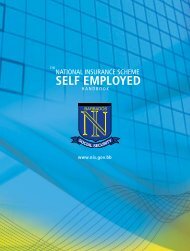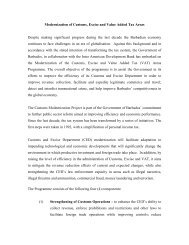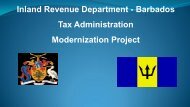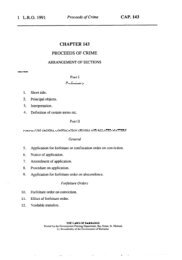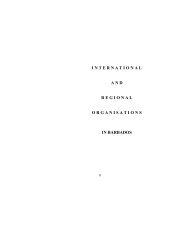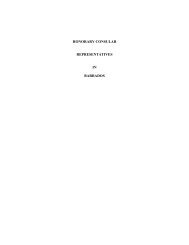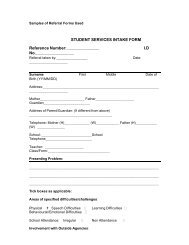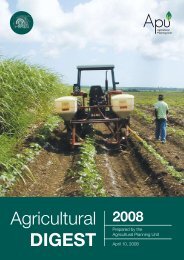Revised Central Bank-AMLA Guidelines - Anti-Money Laundering ...
Revised Central Bank-AMLA Guidelines - Anti-Money Laundering ...
Revised Central Bank-AMLA Guidelines - Anti-Money Laundering ...
Create successful ePaper yourself
Turn your PDF publications into a flip-book with our unique Google optimized e-Paper software.
AML/CFT GUIDELINEISSUED BY THECENTRAL BANK OF BARBADOSIN CONJUNCTION WITH THE ANTI-MONEY LAUNDERING AUTHORITYMAY 20118.0 UNUSUAL & SUSPICIOUS TRANSACTIONSSuspicious transactions are financial transactions that give rise to reasonable grounds to suspectthat they are related to the commission of a money laundering or terrorism offence. Thesetransactions may be complex, unusual or large or may represent an unusual pattern. This includessignificant transactions relative to the relationship, transactions that exceed prescribed limits or avery high account turnover that is inconsistent with the expected pattern of transactions. In someinstances, the origin of the transaction may give rise to suspicion. For examples of “Red Flags” seeAppendix 7.A pre-requisite to identifying unusual and suspicious activity is the profiling of customers anddetermination of consistent transaction limits. Unusual transactions are not necessarily suspicious,but they should give rise to further enquiry and analysis. In this regard, licensees should examine,to the extent possible, the background and purpose of transactions that appear to have noapparent economic or visible lawful purpose, irrespective of where they originate.Licensees should develop procedures to assist in the identification of unusual or suspicious activityin all types of business transactions, products and services offered (for example wire transfers,credit/debit cards and ATM transactions, lending, trust services and private banking).A licensee should:i. Develop effective manual &/or automated systems to enable staff to monitor, on a solo,consolidated and group-wide basis, transactions undertaken throughout the course of thebusiness relationship and identify activity that is inconsistent with the licensee’s knowledgeof the customer, their business and risk profile; andii. Determine customer specific limits based on an analysis of the risk profile of customers,the volume of transactions and the account turnover. This may give rise to multiple limitsand/or aggregate limits on a consolidated basis.Licensees should not grant blanket exemptions and should:i. Clearly document their policy for the granting of such exemptions including the qualifyingcriteria for exemption, officers responsible for preparing and authorizing exemptions, thebasis for establishing threshold limits, review of exempt customers and procedures forprocessing transactions.ii. Maintain authorised exempt lists showing threshold limits established for each qualifyingcustomer; andiii. Monitor currency exchanges and international wire transfers.For the purposes of this guideline, and consistent with Section 2 of the MLFTA, a transactionincludes an attempted or aborted transaction.<strong>Anti</strong>-<strong>Money</strong> <strong>Laundering</strong>/Combating Terrorist Financing Guideline May 2011 25<strong>Bank</strong> Supervision DepartmentCENTRAL BANK OF BARBADOS



